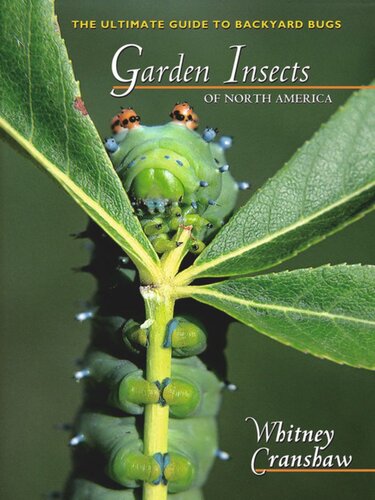

Most ebook files are in PDF format, so you can easily read them using various software such as Foxit Reader or directly on the Google Chrome browser.
Some ebook files are released by publishers in other formats such as .awz, .mobi, .epub, .fb2, etc. You may need to install specific software to read these formats on mobile/PC, such as Calibre.
Please read the tutorial at this link: https://ebookbell.com/faq
We offer FREE conversion to the popular formats you request; however, this may take some time. Therefore, right after payment, please email us, and we will try to provide the service as quickly as possible.
For some exceptional file formats or broken links (if any), please refrain from opening any disputes. Instead, email us first, and we will try to assist within a maximum of 6 hours.
EbookBell Team

4.1
40 reviewsGarden Insects of North America is the most comprehensive and user-friendly guide to the common insects and mites affecting yard and garden plants in North America. In a manner no previous book has come close to achieving, through full-color photos and concise, clear, scientifically accurate text, it describes the vast majority of species associated with shade trees and shrubs, turfgrass, flowers and ornamental plants, vegetables, and fruits--1,420 of them, including crickets, katydids, fruit flies, mealybugs, moths, maggots, borers, aphids, ants, bees, and many, many more. For particularly abundant bugs adept at damaging garden plants, management tips are also included. Covering all of the continental United States and Canada, this is the definitive one-volume resource for amateur gardeners, insect lovers, and professional entomologists alike.
To ease identification, the book is organized by plant area affected (e.g., foliage, flowers, stems) and within that, by taxa. Close to a third of the species are primarily leaf chewers, with about the same number of sap suckers. Multiple photos of various life stages and typical plant symptoms are included for key species. The text, on the facing page, provides basic information on host plants, characteristic damage caused to plants, distribution, life history, habits, and, where necessary, how to keep "pests" in check--in short, the essentials to better understanding, appreciating, and tolerating these creatures.
Whether managing, studying, or simply observing insects, identification is the first step--and this book is the key. With it in hand, the marvelous microcosm right outside the house finally comes fully into view.